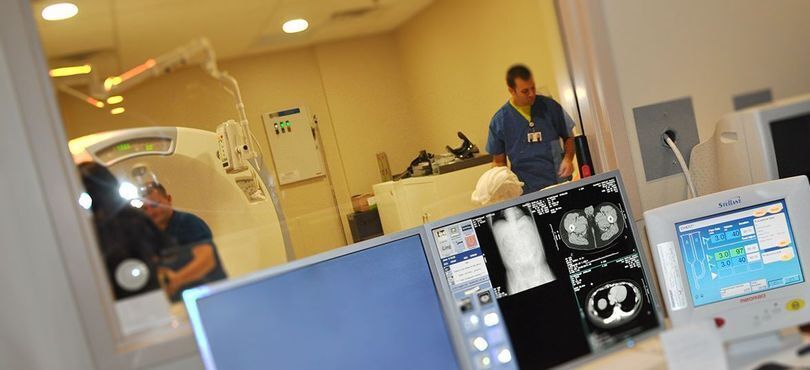Computerized Tomography
What is a CT Scan?
Computed tomography scans, or CT scans, use rotating X-rays and computers to produce cross-sectional images of the body. Whereas traditional X-ray machines are designed to target a single spot, CT scans take pictures that show thin “slices” of your muscles, bones, organs, and blood vessels to provide healthcare workers with a staggering amount of detailed information.
What to expect
You should wear comfortable, loose-fitting clothing to your exam. You may be given a gown to wear during the procedure. Metal objects including jewelry, eyeglasses, hearing aids, dentures and hairpins may affect the CT images may need to be removed prior to your exam.
You may be asked not to eat or drink anything for several hours beforehand. You should inform your physician of any medications you are taking and if you have any allergies, especially to contrast materials.
When it’s time for the test, you’ll be instructed to lie on your back on the CT scan table. You will need to lie completely still on the table and sometimes hold your breath. The table will move in and out of the scanner, as the X-ray tube rotates inside the scanner you will hear buzzing and whirring noises.
CT scans can take anywhere between 5 and 30-minutes to complete.
How is the CAT scan performed?
A CT scanner is shaped like a large doughnut standing on its side. You lie on a narrow table with a motor that slides through the center of the scanner into a tunnel. While the table moves you into the scanner, the X-ray tube rotates around you. Each time it rotates, it gives images of thin slices of your body.
CT scans may be done with or without contrast. Some CT exams require the use of contrast material in order to produce more detailed or more targeted CT scan images. Contrast material (or dye) highlights certain features like organs, blood vessels, and more.
If your doctor deems that contrast material is necessary, your preparation may include drinking or being injected with a special iodine-based liquid. This dye can make you feel flushed or give you a metallic taste in your mouth that lasts for a few minutes. The contrast is typically cleared from your body through your urine over the course of 24-hours. You also might be told to drink lots of fluids to help your kidneys remove the dye from your body.
The Results
A radiologist, a physician specifically trained to interpret radiology examinations, will analyze the images and send a signed report to your primary care or referring physician, who will share the results with you.



